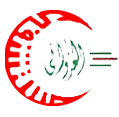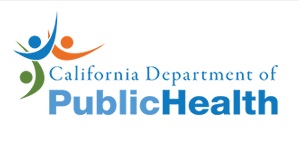Title Page
-
Audit Title
-
Ambulance #
-
Conducted on
-
Prepared by
-
Location
Part 1. Equipment Requirements for Emergency Medical Services
-
Instructions:
-------------------------------------
1. Specify the quantity of each item in the Intermediate Life Support Ambulance.
2. To add a Corrective Measure click on the paperclip icon then "Add Action", provide a description, assign to a member, set priority and due date.
3. Complete audit by providing digital signature.
4. Share your report by exporting as PDF, Word, Excel or Web Link.
Specific Requirements:
-------------------------------------
Unless otherwise stated, all equipment listed below is per vehicle and not per operational base.
Airway Equipment
-
Oropharyngeal airway No. 00
-
Oropharyngeal airway No. 0
-
Oropharyngeal airway No. 1
-
Oropharyngeal airway No. 2
-
Oropharyngeal airway No. 3
-
Oropharyngeal airway No. 4
-
Yankauer-type hard suction catheter (adult)
-
Yankauer-type hard suction catheter (paediatric)
-
Neonatal suction catheters size No. 5 French
-
Neonatal suction catheters size No. 6 French
-
Neonatal suction catheters size No 8 French
-
Paediatric suction catheter size No. 10 French
-
Adult suction catheter size No. 12 French
-
Adult suction catheter size No. 14 French
-
Portable suction apparatus (Combination of battery and electrically operated)
-
Manual hand operated portable suction apparatus (as a back up device)
-
Stethoscope (combination of diaphragm and bell type head)
-
Commercially packaged, disposable sterile Needle Cricothyroidotomy Kit including alcohol swab, 14 gauge IV canula, jet insufflation device and endotracheal tube adapter.
Endotrachael Intubation equipment:
-
Magill forceps - Adult
-
Magill forceps - Paediatric
-
10ml syringes
-
20ml syringes
-
Pair sharp, clean scissors
Breathing / Ventilation Equipment:
-
Adult oxygen masks providing 40% inhaled oxygen with tubing
-
Adult non-re breather masks providing 100% inhaled oxygen with tubing
-
Adult oxygen nebuliser masks including tubing and fluid reservoir
-
Nasal cannula with tubing
-
Pediatric oxygen masks providing 40% inhaled oxygen with tubing
-
Pediatric non-re breather masks providing 100% inhaled oxygen with tubing
-
Pediatric oxygen nebuliser masks including tubing and a fluid reservoir
-
Oxygen T-Piece with tubing
-
Adult Bag-Valve-Mask with Reservoir and adult mask (size 4)
-
Pediatric Bag-Valve-Mask with Reservoir and pediatric mask (size 1)
-
Neonatal Bag-Valve-Mask with Reservoir and neonatal mask (size 0)
-
Oxygen Humidification Device
-
Please proceed to the next section for Part 2.
Part 2. Equipment Requirements for Emergency Medical Services
Oxygen Supply:
-
Minimum of a portable oxygen cylinder. Size “D”
-
Portable oxygen cylinder gauge with flow meter
-
Fitted oxygen cylinder/s, size “F” capable of supplying a minimum of 30 minutes of oxygen at a flow rate of at least 15 liters per minute
-
Fitted oxygen cylinder gauge with flow meter
Ventilator
-
Anti-bacterial ventilation circuit filter for use with both manual as well as mechanical ventilation methods
Diagnostic /Therapeutic Equipment:
-
Sphygmomanometer including adult, pediatric and neonatal cuffs
-
Pupil torch
-
Glucometer and blood glucose monitoring strips
-
Pulse Oximeter (if not included as a feature of an ECG monitor or electronic patient monitor)
-
Automated External Defibrillator (AED) (annual calibration not required due to self-testing and self- calibration of the unit)
-
Automated External Defibrillator (AED) that is approved by the manufacturer for use in a moving vehicle, To be used in combination with a Vital Signs Monitor that includes visual 3 lead ECG Monitoring and a ECG rhythm printer/recorder feature (Vital Signs Monitor requires annual calibration certification)
-
ECG monitor and defibrillator featuring 3 lead ECG monitoring capability, 3 lead cable, AED capability, AED pads, manual defibrillation, recorder / printer with paper and hard defibrillation paddles (requires annual calibration certification)
-
ECG monitor and defibrillator featuring 3 lead ECG monitoring capability, external cardiac pacing, cardioversion, pacing/AED pads, manual defibrillation, recorder / printer with paper and hard defibrillation paddles (requires annual calibration certification)
-
Defibrillation gel
-
End Tidal CO2 Monitor – Capnograph (if not included as a feature of an ECG monitor or electronic patient monitor)
Miscellaneous Disposable Equipment:
-
Boxes of disposable examination gloves (Small)
-
Boxes of disposable examination gloves (Medium)
-
Boxes of disposable examination gloves (Large)
-
Infection Control N95 Face Mask
-
Wound dressing 254mm x 762mm (multi-trauma dressing)
-
Wound dressings 100mm x 100mm
-
Wound dressings 100mm x 200mm
-
Hydrogel Burn Dressing 100mm x 100mm
-
Hydrogel Burn Dressing 200mm x 200mm
-
Hydrogel Burn Dressing 200mm x 450mm
-
Gauze swabs (100mm x 100mm)
-
Roll of 25 mm adhesive tape (zinc oxide)
-
Roll of 10 mm adhesive tape (hypo-allergenic)
-
75mm elasticised bandages
-
100mm elasticised bandages
-
Sealed maternity pack (including 2 x sealed & sterile surgical blades, 4 x sealed sanitary pads, 2 x sealed space blankets, 4 x sealed & sterile umbilical cord clamps, 1 x sealed & sterile mucous extractor)
-
Regurgitation bags
-
Large kidney bowl / receiver (may not be a bedpan)
-
Sealed space blanket
-
Clear safety goggles
-
Range of nasogastric tubes
-
Please proceed to the next section for Part 3.
Part 3. Equipment Requirements for Emergency Medical Services
Intravenous Therapy Equipment:
-
Alcohol Swab (30mm x 30mm)
-
14 gauge intra-venous catheters
-
16 gauge intra-venous catheters
-
18 gauge intra-venous catheters
-
20 gauge intra-venous catheters
-
22 gauge intra-venous catheters
-
24 gauge intra-venous catheters
-
60 micro drops / ml – Administration Sets
-
15 drops / ml or 20 drops / ml- Administration Sets
-
10 drops / ml – Blood Administration Set
-
High Capacity 10 drops / ml Administration Set
-
Volume Control Administration Set (eg. Buretrol,
-
200ml Normal Saline – IV Fluid
-
1000ml Ringers Lactate – IV Fluid
-
1000ml Balsol – IV Fluid
-
500ml Synthetic Colloid e.g. Haemacell / Haes- sterile
-
Transparent, waterproof, IV securing dressing (ie. Tegaderm or similar) minimum of 10cm x 12cm dimensions
-
Infusion flow regulators (eg Dial-a-Flow, Dosi Flow)
-
3 Way Stopcock
-
Spencer Wells Artery Forceps
-
Pressure Infusion Bags
Drugs and Drug Therapy Equipment:
-
Activated Charcoal
-
Glucose powder or gel
-
Entonox with demand value and regulator
-
50 ml syringes
-
20 ml syringes
-
10 ml syringes
-
5 ml syringes
-
2 ml syringes
-
1 ml syringes
-
16 gauge needles
-
20 gauge needles
-
Aspirin
-
Dextrose 50%
-
Fenoterol
-
Ipratropium Bromide
-
Salbutamol
-
Drugs according to the HPCSA scope of practice for ECP Paramedics (per ambulance / vehicle)
-
Please proceed to the next section for Part 4.
Part 4. Equipment Requirements for Emergency Medical Services
Transport and Immobilization Equipment:
-
Hard/Stiff Neck Cervical Collars – Small
-
Hard/Stiff Neck Cervical Collars – Medium
-
Hard/Stiff Neck Cervical Collars – Large
-
Full set of Soft Cervical Collars (Small, Medium,Large)
-
Patient Extrication Device – Adult (KED)
-
Patient Extrication Device – Paediatric (KED)
-
Long spine board
-
Scoop stretcher
-
Vacuum Mattress
-
Set Head Blocks
-
Spider harness
-
Lower extremity traction splint – Adult
-
Lower extremity traction splint – Paediatric
-
Long splints – Leg
-
Short splints – Arm
-
PASG/MAST suit (optional)
Other:
-
Pillow
-
Sheet
-
Blanket
-
Bedpan/urinal
-
Waste disposal facility (enclosed container)
-
Red, medical waste disposal plastic bags
-
Enclosed, commercially manufactured, disposable sharps container
-
Suitably manufactured Jump Bag for safe, clean and secure storage and transportation of medical equipment
-
Suitably manufactured Drug Pouch for safe, clean and secure storage and transportation of medication and administration accessories
-
Pair rescue scissors
-
High visibility, reflective vest and / or jacket
-
Safety helmet
-
Fire Extinguisher (minimum of 2KG dry powder)
-
Thermometer (standard)
-
Casebook or patient record sheet
-
Declaration of death book
-
Map book or fitted GPS device
-
Completed by:









